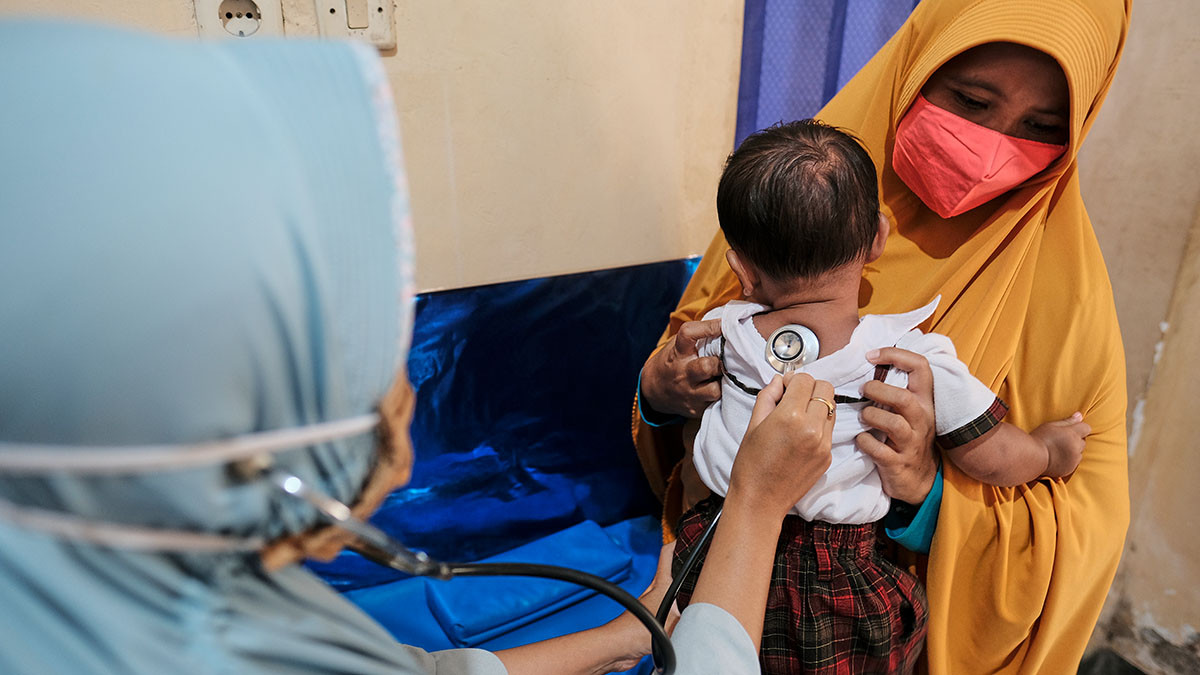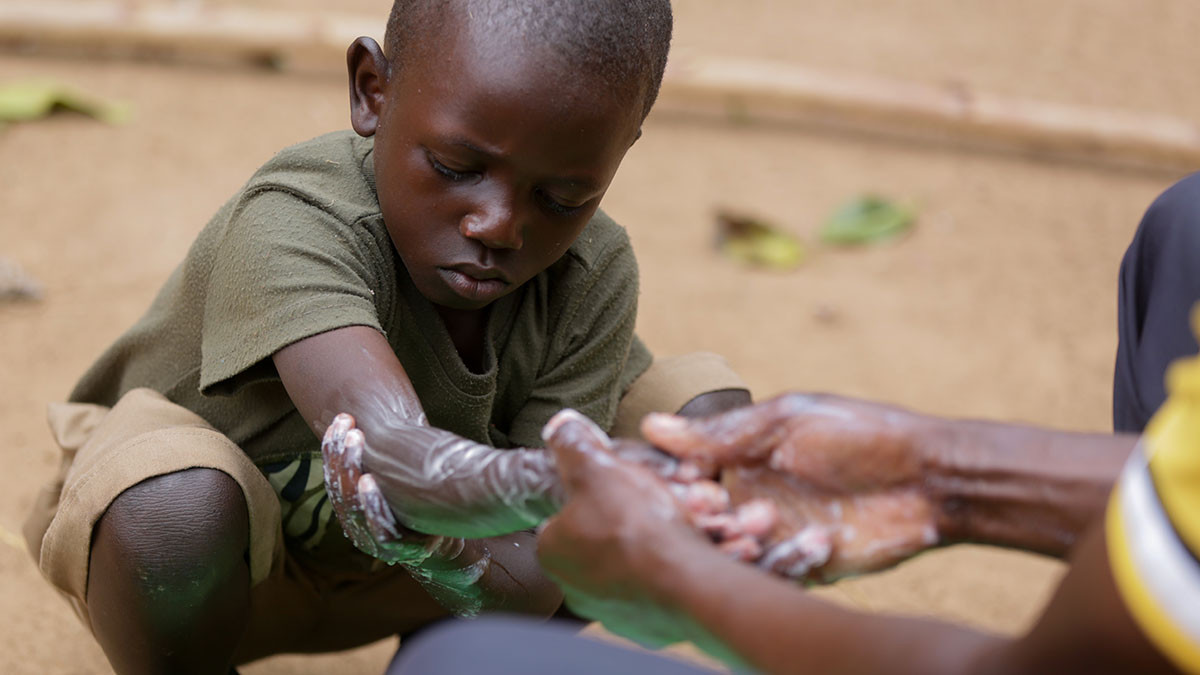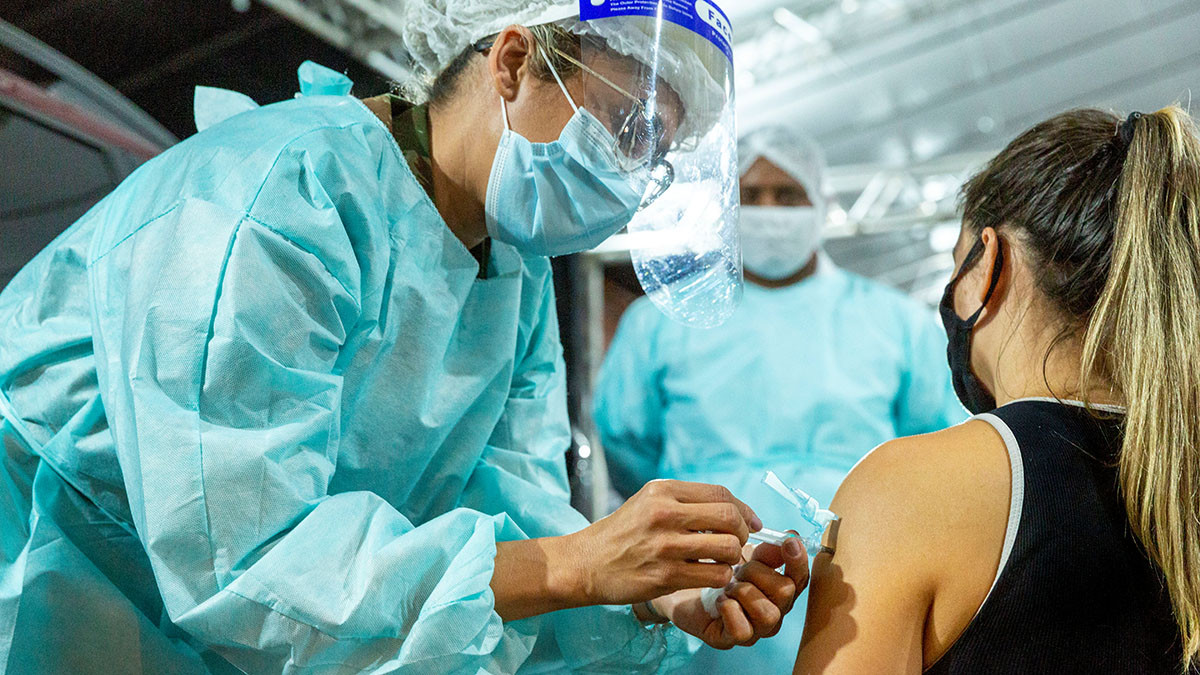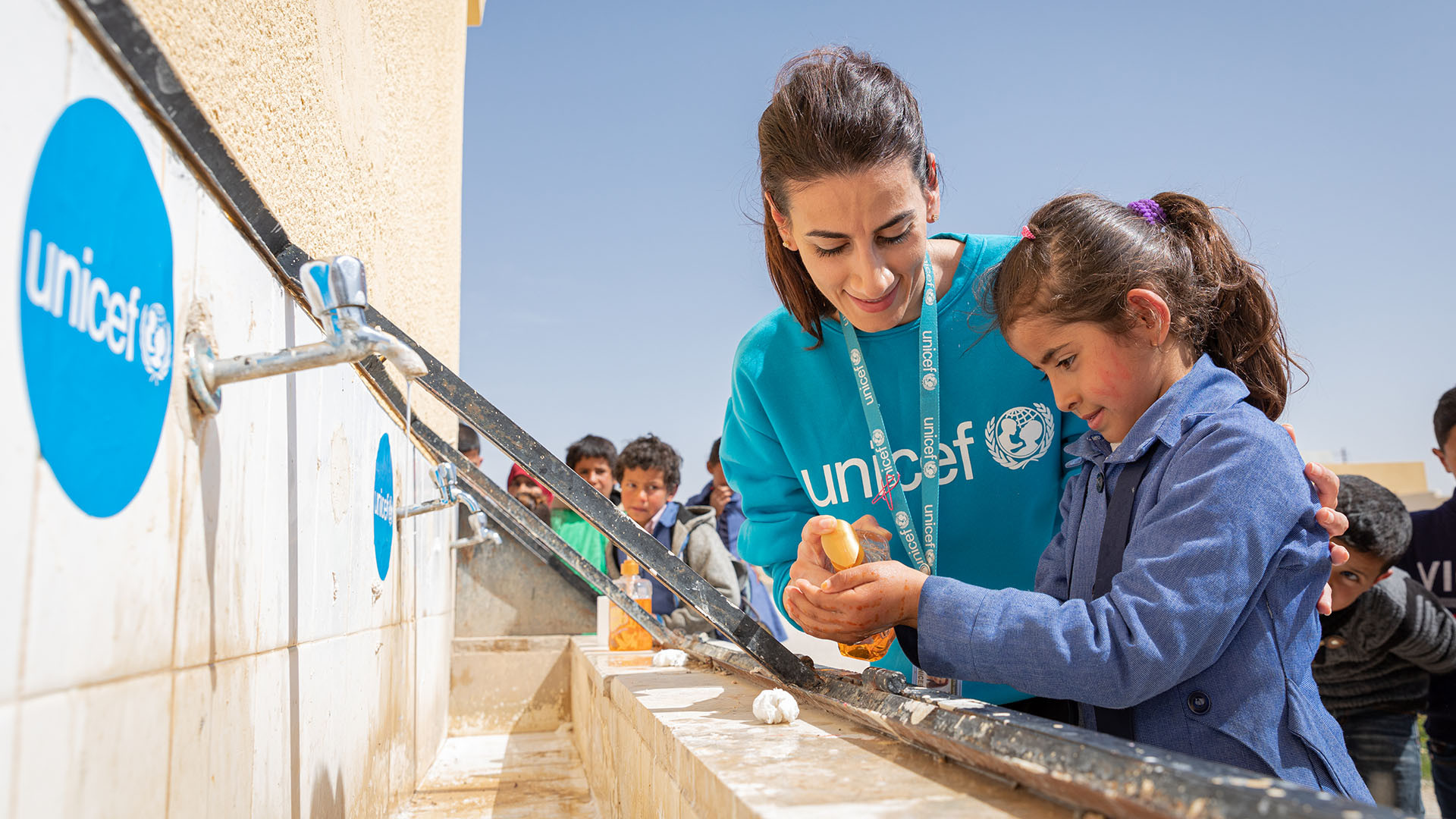The COVID-19 pandemic has shattered the lives of children and their families around the globe. UNICEF is working on the front lines to slow the spread of COVID-19 and minimize its impact on children worldwide, from providing life-saving medical supplies and building water and hygiene facilities to providing girls and boys with education and shelter.
billion children
billion people
people worldwide
The situation
Coronavirus continues to spread. And while wealthy industrialized nations secured millions of vaccine doses early on, poorer countries are being left out. The rapid spread of new COVID-19 variants is further exacerbating the situation.
Children are not the face of this pandemic, but they run the risk of becoming its biggest victims. Their lives have been turned completely upside down overnight. The pandemic is having an impact on all aspects of their daily lives: their education, their health, their nutrition and, last but not least, their wellbeing. The longer the COVID-19 crisis lasts, the more serious this impact becomes. The virus threatens girls and boys already weakened by war, disease, hunger and poverty, as their survival depends on a functioning health system, life-saving food, clean water and medical care.
The only way out of the pandemic is to bring COVID-19 under control globally.
Impact on children worldwide
Although the impact of the pandemic has not yet been fully assessed, a grim picture is beginning to emerge at multiple levels:
UNICEF is doing everything it can to ensure that the COVID-19 pandemic does not become a lasting crisis for children.
How UNICEF helps
We have already accomplished a lot together in the fight against coronavirus. Since the start of the response to the coronavirus pandemic in early 2020, UNICEF and its partners have provided critical relief supplies and financial/technical assistance to 153 countries and territories, reaching 261 million children with vital services in the areas of health, nutrition, education, child protection, water, sanitation and hygiene (WASH), gender-based violence and social protection.
-
We are distributing simple but effective supplies such as soap to communities, schools and public institutions.
-
We are providing medical supplies and protective equipment for health workers, such as disposable gloves and protective suits.
-
We are ensuring that basic medical care is available in developing countries and crisis regions. We are training health workers and tackling issues such as vaccinations and prenatal care.
-
We are educating children and their families worldwide about the importance of simple hygiene rules such as handwashing, so that they can protect themselves. Our aid workers convey this message through platforms such as television, social media, radio and speeches in public squares.
-
UNICEF is helping to protect children and guide them through this period of crisis. Our staff talk to children and help them process their difficult experiences, for example by playing games.
-
Only three in five people worldwide have simple ways to wash themselves. We are working continually to provide more people with access to washing facilities.
-
We are committed to ensuring that children can continue to learn, and we are helping to create learning opportunities. We are also advising governments on how to achieve this.

Indonesia
Indonesia, the largest and most populous country in south-east Asia, has the highest number of COVID-19 cases in the region. As of July 7, 2021, the country had recorded a total of 2.3 million COVID-19 cases and 62,908 deaths. After cases and deaths fell in March 2021, Indonesia is now seeing a renewed increase in cases of COVID-19, including the highly infectious Delta variant, which is placing a burden on the health system.
More than a year after the outbreak of the pandemic, 80 million children and young people in Indonesia are facing far-reaching secondary impacts on their learning, health, nutrition and economic security. In 2020, the disruption in the care provided by village health stations led to a fall of up to 56 percent in vaccination rates. Only 34 percent of schools had resumed in-person teaching by July 2021. Almost three-quarters (74 percent) of households have experienced income losses, and nearly 30 percent fear that they may not be able to feed their families due to these financial constraints and food interruptions.
The Indonesian government has received nearly 8.4 million doses of COVID-19 vaccine through the COVAX vaccination program. UNICEF is supporting the government’s efforts to deliver the vaccine nationally and in all 34 provinces, including targeting priority groups such as teachers and the elderly.

Africa
With cases doubling every three weeks in Africa, the Delta variant of COVID-19 has spread to 16 countries and is present in three of the five nations with the highest numbers of cases.
Along with Alpha and Beta, Delta is fueling an aggressive third wave in Africa, with case numbers climbing faster than all earlier peaks, according to the World Health Organization (WHO).
WHO experts have warned that the numbers have increased for six consecutive weeks, rising by 25 percent last week to 202,000 positive cases. The number of deaths has also risen by 15 percent across 38 African countries, to nearly 3,000.
The rise in cases is driven by a mixture of public fatigue, social interaction, ineffective use of public healthcare and social measures, vaccine inequality and the spread of new variants.
Eight vaccines have been approved for the WHO emergency list, but shipments to Africa have effectively dried up. Only 15 million people, just 1.2 percent of the African population, are fully vaccinated.
“The speed and scale of Africa’s third wave is like nothing we’ve seen before. The rampant spread of more contagious variants pushes the threat to Africa up to a whole new level. More transmission means more serious illness and more deaths, so everyone must act now and boost prevention measures to stop an emergency becoming a tragedy.”

Brazil
Brazil is the Latin American country most affected by the COVID-19 pandemic. By July 13, 2021, the country had reported around 19 million cases. It was followed by Argentina, with more than 4.6 million confirmed cases of COVID-19. Overall, almost 39 million diagnosed patients and a growing number of fatal cases have been recorded in the region.
One major reason for this is the mutation of the virus. This has allowed the virus to spread unhindered due to inadequate safety measures, leading to re-infection of patients who have already recovered.
The COVID-19 pandemic has had a devastating impact on Brazil, due in part to the high level of income inequality in the country.
COVID-19 incidence rates are much higher in the northern and north-eastern regions, where inequality between poor and rich population groups is especially high. Indigenous communities, the Quilombola population, people of African descent and marginalized urban communities are the most severely affected and are in urgent need of additional support.
